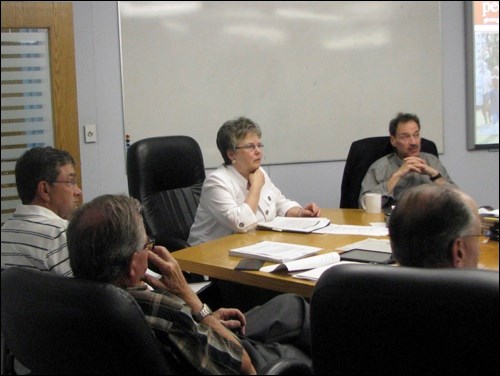"What it's going to look like in the future, I'm really not sure."
Those were the nearly-parting words of the Living Sky School Division's superintendent of research and data to the division's board last week regarding the form standardized testing in Saskatchewan schools may be taking.
Janine Otterson, in her final report to the board before retirement, told the board the province's plan to take control of assessment in order to standardize testing across the province may see them following a model similar to Ontario's, rather than Alberta's, as had previously been suspected by educators and administrators.
Ontario has set a target of 85 per cent graduation, with 75 per cent of students achieving or exceeding a "satisfactory" level of achievement, she said.
Saskatchewan's graduation rate has traditionally been in the 70s, with aboriginal rates in the 30s. The 2012 Saskatchewan Provincial Auditor Reports on Areas For Improvement has called for the Ministry of Education to improve Grade 12 graduation rates, and to provide school divisions with clear strategies to meet that goal.
While Otterson said divisions such as Living Sky, whose students include socio-economically challenged groups, will still be facing complex questions regarding student engagement and success, she had positive things to say about Ontario's system.
"They've been into it for a long time, so it's quite a sophisticated system," she said.
Those who developed the system listened to the schools of the province, she said, shortening the time needed to do standardized tests, and also bringing in a committee of international experts to critique the system.
As a result, she said, it has clear standards and systems schools can use without burdening teachers and class time.
One complaint common to various testing tools used across the province, including the Assessment for Learning system the province has just scrapped, has been the time it takes away from instruction and class preparation.
She added, Ontario is "also very big on having parents accepting responsibility for supporting students."
She provided board members with a copy of Ontario's Education Quality and Accountability Office Individual Student Report that is made available to parents and guardians, along with online resources aimed at helping them increase their children's chances of success.
The province's interest in Ontario's system is clearly signalling a shift, said Otterson.
That shift appears to be all about accountability. The province will be setting the standard, and the boards of education, the teachers and the schools will be responsible for meeting those standards, she explained.
Director of Education Randy Fox agreed, saying it's his understanding that the Ministry of Education will have something in place by 2015.
He said the ministry has been seconding a number of people from some Saskatchewan school divisions, "field-based" people, to three-year contracts. No doubt there is a goal to get the system in place by the next election, he noted.
He said of the Ministry bringing in new faces, "There are some good people there."
Otterson, who said, "The K-12 grade structure as we know it is finished," doesn't plan to leave education behind upon retiring. Her intent is to research other education models emerging.
She told the board she'd keep them posted on her findings.




